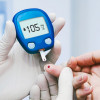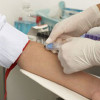
 IJCP Editorial Team
IJCP Editorial Team
Healthy Eating For Diabetic People
The importance of diet in regulating blood
glucose levels is well recognized. Eating the right type and amount of food at
the right time can help to maintain healthy blood glucose levels and reduce the
risk of developing diabetes and related health issues. Especially for diabetic
people, eating a balanced diet helps to fulfill their nutritional needs without
spiking their blood sugar levels.
Diabetes Diet Plan
A diabetes diet is designed to help
individuals better utilize the insulin their body produces or receives through
medication. It is a healthy-eating plan focusing on consuming nutrient-rich
foods that help maintain an optimal blood sugar level, manage body weight, and
reduce the risk of developing diabetes-associated complications such as heart
disease, stroke, and kidney damage. A registered dietitian can create a
personalized diet plan considering health goals, personal taste, and lifestyle.
Furthermore, they can guide portion size to ensure the diet is tailored to
individual size and physical activity level.
How to formulate an effective diabetes diet
plan?
It is crucial for individuals with diabetes to
maintain a healthy eating plan. This eating plan should include the correct
amounts of food and carbs at each meal or snack to help control blood sugar
levels. It is also essential to eat at regular times and to measure food to
ensure the right amounts are taken. Eating roughly the same amount of carbs at
each meal can be beneficial.
Recommended Foods
Eating the right foods for diabetes signifies
consuming a variety of healthy foods from all the food groups:
- Complex Carbohydrates - During digestion, carbohydrates like sugars and
starches are broken down into sugar glucose, which enters the bloodstream.
To ensure you are getting the most health benefits, focus on consuming
healthy carbohydrates, such as fruits, vegetables, whole grains, legumes,
and low-fat dairy products. Avoid foods or drinks with added fats, sugars,
and sodium, as they provide fewer health benefits.
- Dietary Fibers - Dietary fiber is an integral part of a healthy
diet, as it helps regulate digestion, maintain healthy blood sugar levels,
and provide many health benefits. Foods that are high in fiber include
vegetables, fruits, nuts, legumes, and whole grains such as oats and
barley.
- Proteins -
Protein plays a vital role in managing diabetes, as it helps to slow
glucose absorption preventing blood sugar spikes. Protein also helps to
reduce cravings and provides the body with essential nutrients.
High-quality protein sources, such as lean meats, fish, eggs, nuts, and
legumes, can help keep blood sugar levels in check.
- Healthy Fats - Consuming foods containing monounsaturated and
polyunsaturated fats can lead to improved cholesterol levels. These foods
include avocados, nuts, canola, olive, and peanut oils. However, consuming
these foods in moderation is essential as they are all high in calories.
Foods to limit to control blood sugar-
To keep blood sugar under control, limit foods
and drinks that are high in carbs by consuming them less often or in smaller
amounts. Like:
- Sugary foods, like candy, cookies, canned fruits with
added sugar, etc
- Drinks with added sugars
- White rice, tortillas, bread, and pasta - particularly
those made using white flour
- Starchy vegetables, like white potatoes, corn, etc
- Individuals may also need to limit their alcohol
intake, fat, and salt.
Meal Plan Methods for Diabetics
There are two common ways to help plan the
amount of food to eat if you have diabetes. Check with the healthcare team
about the best method for you.
Plate method - The plate method helps control portion sizes
and works best for lunch and dinner. It uses a 9-inch plate to put non-starchy
vegetables on half of the plate, meat or other protein on one-quarter, and
grains or other starch on the last quarter. A small bowl of fruit or a piece of
fruit and a small glass of milk may also be included in the meal plan. The
daily eating plan also may include small snacks between meals.
Carbohydrate counting - This method
involves tracking the number of carbohydrates you eat and drink daily. Since
carbohydrates turn into glucose in the body, they affect blood glucose levels
more than other foods. Carb counting helps the body regulate blood glucose levels.
This meal planning tool is specially designed for people with diabetes who take
insulin; however, not all people with diabetes require counting carbohydrates.
Following is the method to count carbohydrate grams in your food.
The Bottom line-
Diabetes is a chronic health condition raising
global concerns and needs requisite intervention. Nutrition and physical
activity are crucial parts of a healthy lifestyle in patients with diabetes.
Apart from other potential benefits, following a healthy meal plan and being
active can help keep the blood glucose level in the target range.
Becoming more active and
changing dietary habits may seem challenging initially, but help from family,
friends, and the healthcare team will help make it easier.

IJCP Editorial Team
Comprising seasoned professionals and experts from the medical field, the IJCP editorial team is dedicated to delivering timely and accurate content and thriving to provide attention-grabbing information for the readers. What sets them apart are their diverse expertise, spanning academia, research, and clinical practice, and their dedication to upholding the highest standards of quality and integrity. With a wealth of experience and a commitment to excellence, the IJCP editorial team strives to provide valuable perspectives, the latest trends, and in-depth analyses across various medical domains, all in a way that keeps you interested and engaged.













.jpg)






Please login to comment on this article